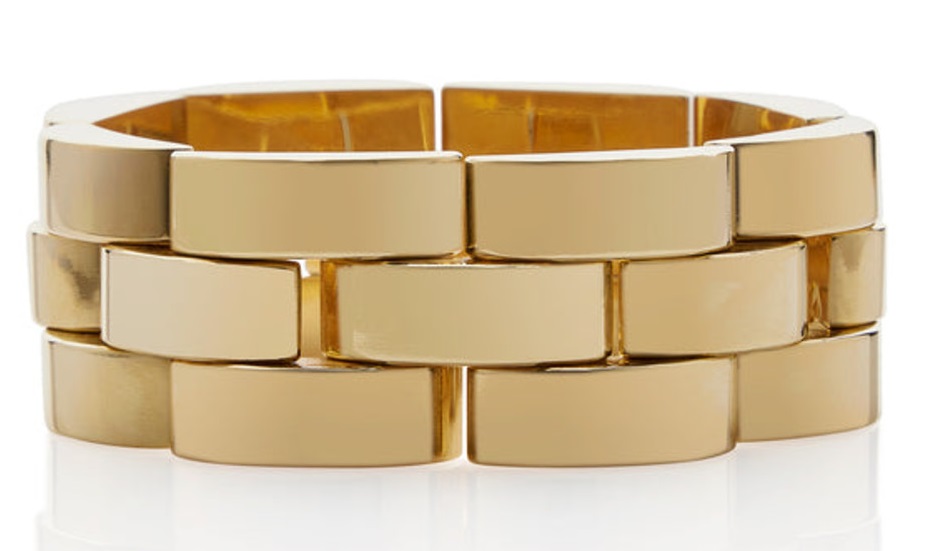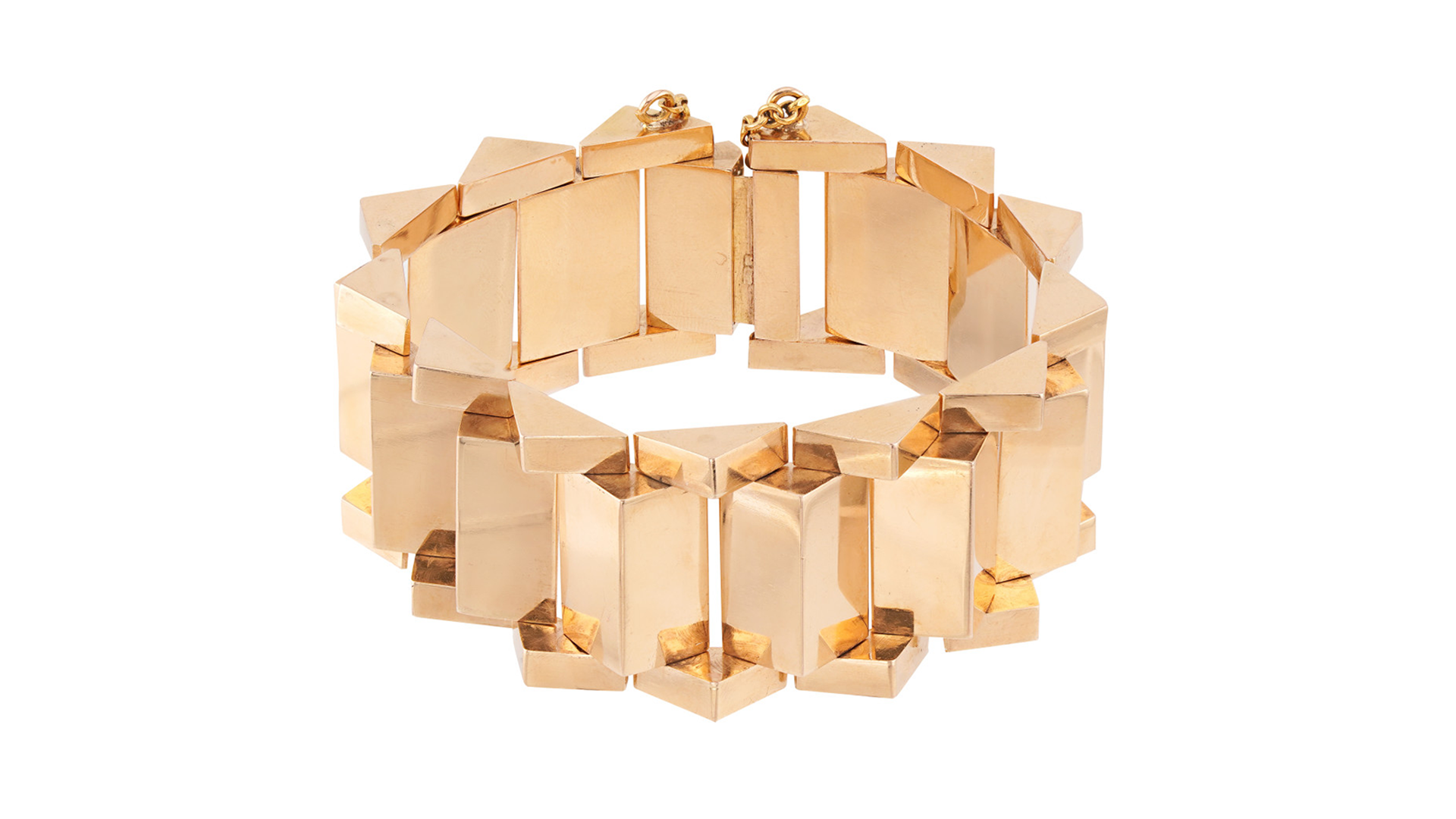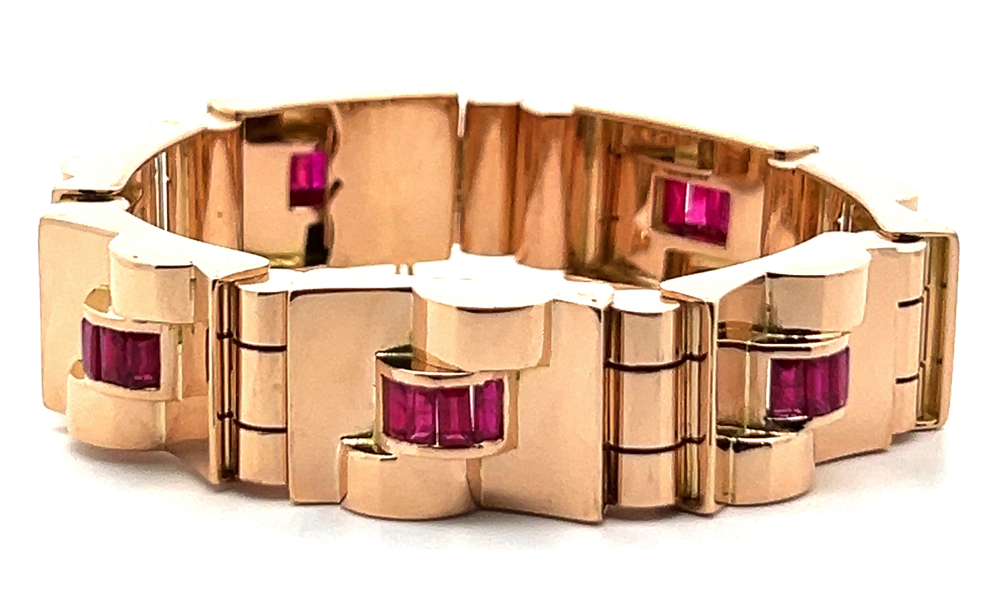Bold, patriotic and futuristic, those are the defining traits of retro era tank bracelets. Due to World War II patriotic themes were important motifs in 1940s jewelry manifesting in pieces with flag or military themes as well as jewelry that showcased red, white and blue gemstones in one item. However, those weren’t the only inspirations for jewelry during the retro years. The heavy tanks used by the military, bicycle chains, machinery and industrial motifs were also very influential in jewelry design tapping into the pared back modernist movement that had started decades earlier.
Massive gold 1940s era tank bracelets epitomized this modernist look. While these oversized gold wrist ornaments are widely associated with the World War II years, the trend to large gold bracelets actually started towards the end of the 1930s as the winds of World War II began to engulf Europe.
What Defines a Tank Bracelet?

The tank bracelet was inspired by the marks left in the ground by tank tire treads as they rolled along in the dirt. The look was sculptural and three-dimensional, while still adhering to the geometric form of the tank treads. While tank tires were the main inspiration for these bracelets, factory assembly lines and industrial components played heavily into the designs.
Tank bracelets were made in gold, as platinum had been declared a strategic metal and was reserved for war use. However, gold was also hard to come by. In an effort to make the metal go further, two things happened. Gold was alloyed with copper as a way to use less of the precious metal, which turned yellow gold into the warm rosy color that is so often associated with 1940s jewelry. Sometimes yellow and rose gold were mixed together in one bracelet for some added design interest. Pieces were also made with large, flat metal surfaces, or hollow components to reduce the amount of gold used in a piece, which also made the bracelets light weight despite their voluminous proportions.
While most of the time, tank bracelets were gold only, they are sometimes found with accents of small gemstones, often rubies or sapphires. Due to the war and constantly shifting import/export rules, many gemstones were hard to get, so jewelers had to rely on what they already had on hand, which tended to be smaller stones that they used sparingly as accents. Alternatively, jewelers used synthetic rubies or sapphires to achieve the desired effect.
Striking Style

The bold tank bracelets were the perfect complement to the severity of women’s fashion during the war years, when suits with slim skirts worn with wide shouldered jackets were the style. Jewelry was worn to brighten up an outfit, or to elevate it from day to night, and in the case of tank bracelets, as a symbol of strength.
During the 1940s jewelry was worn, just less of it, leading to the “rule of two”, when only two pieces of jewelry were worn together. It could be any combination, but the tank bracelet was a versatile piece that could be worn with pretty much anything. The ample proportions of the bracelet looked right with the cocktail rings of the 1940s set with colossal sized gemstones such as aquamarine, citrine or amethyst. These colored gemstones were more accessible due to their less expensive price point and because they came from Brazil where it was easier to source gems rather than from Asia, where many mines were closed because of the war. A tank bracelet was also a nice counter point to a brooch or earrings. The strength of the tank bracelet design also made it perfect to wear on its own, exuding a sense of chic confidence.
Tank bracelets also fit right in with today’s fashions, worn on its own, it encapsulates minimalist luxury. For those who prefer patterns in their clothes and more jewelry, the bold size of the tank bracelet stands out from the fabric’s color and prints, while anchoring other jewels.
The architectural form of tank bracelets continued the modernist, mechanized look that was beginning to take hold in the early 20th century, showcasing the power of industrial design as a new style meant to move jewelry into the future.
Top of Page: Retro 18-karat rose gold tank bracelet, French, circa 1940s.
Authored by Amber Michelle

